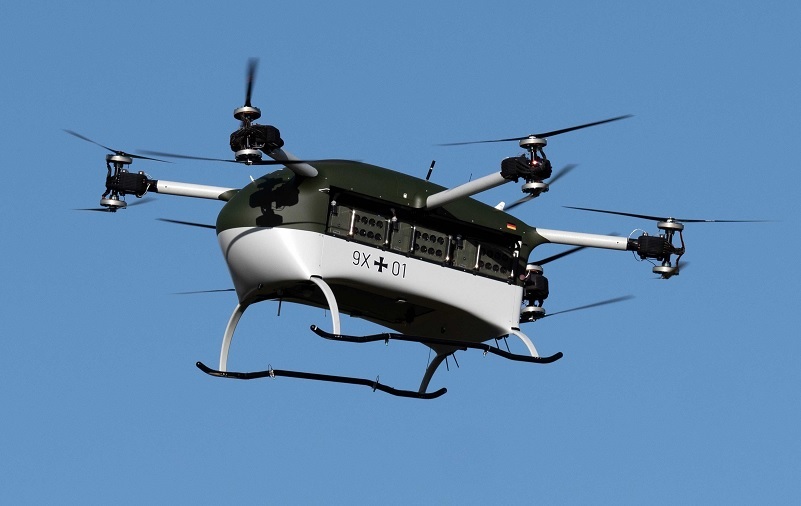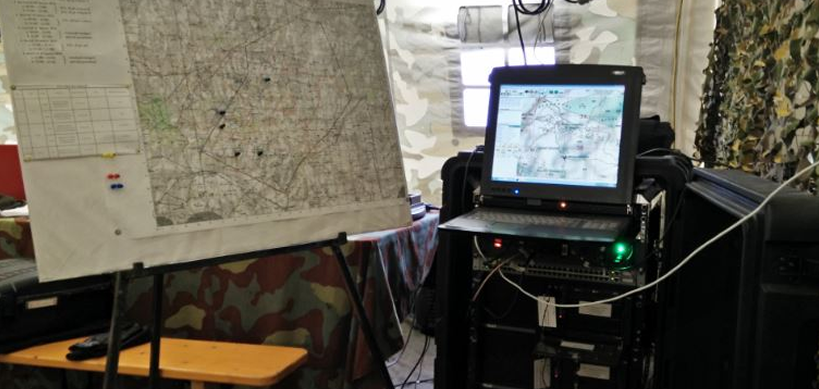The purpose of this article is to reflect on how artificial intelligence can be used in a war context and subsequently introduced into a civil operational environment.
Defence has always been a development driver for new technologies and when they reach a suitable maturity they can be converted for civil use. Some famous examples are:
- Internet: the initial purpose of the Internet was to ensure stable and efficient communications between the branches of the US military.
- GPS: the GPS (Global Positioning System) signal was developed in 1973 by the US Department of Defence (USDOD) and later used in the civil sector, albeit with some limitations.
- Radar: used in the Second World War for wartime purposes, it later found application in the civil sector.
The list would be really long and we could jump from the microwave to the photo sensors in our SLRs or smartphones.
The use of I.A. in the military
The focus is on artificial intelligence because it is perceived as very promising and with truly innovative potential. Artificial intelligence has been observed in the military sphere for much longer than in the civil sphere, also due to the evolution of weapon systems that have led, for instance, to the construction of unmanned aircraft (UAVs) sometimes assisted by intelligent algorithms.
Health context

One area of development is precisely the one just mentioned and concerning remotely piloted aircraft (APRs). Drones, for instance, can be equipped with algorithms that can support soldiers in automatic assistance procedures in theatre of operations, resulting in a more timely intervention and reduced risk for humans. First-aid operations, for example, can be very risky in war contexts and the use of drones mitigates these risks, reduces time and can facilitate effective treatment. First aid is part of a process of treating the wounded that falls under the broader MEDEVAC (Medical Evacuation) capability; the development in the use of drones has led to a specialisation of the terminology in DRONEVAC.
Allied support

An operational theatre is a very complex context in which to operate. It is not only the quantity and scale of the risks that make it so: it is the number of players operating in it between civilians, allied forces(blue force) and adversary forces(red force). At the tactical level, the allied tracking system is called Blue Force Tracking (BFT) and it plays an essential role in the management of the theatre of operations: it allows the exact position of every single asset (be it human or non-human) to be known with real-time positioning; be it allies, adversaries or civilians. This drastically reduces friendly fire errors, enables the implementation of strategies to safeguard civilians and promotes an optimal theatre of operations management system.

Artificial intelligence applied to BFT is crucial because an error in the system, even a minor one, can have very significant consequences. A.I. in this context can help to:
- Analysing the movements of enemy forces and suggesting strategies to avoid ambushes.
- Anticipate possible collisions or friendly fire in complex scenarios.
- Correcting location errors due to interference or loss of GPS signal using machine learning algorithms.
- Optimise communication between devices, reducing the delay in transmitted data.
- Using advanced sensors and computer vision, identify hostile units and differentiate them from friendly ones.
- Integrate video feeds from drones to provide a more detailed view of the situation.
- Suggest safe routes for troops, taking into account terrain, enemy presence and weather conditions.
- Support the command with scenario simulations and proposals for tactical manoeuvres.
- Acting as a link with UAV (drone) and UGV (autonomous ground vehicle) systems to monitor the battlefield.
- Integrate the algorithms with the cyber warfare layer, to detect attempts at spoofing or jamming communications.
- Provide real-time updates to commanders, making it easier to read critical information.
- Visualise the BFT through AR (augmented reality) interfaces directly on soldiers’ visors.
In essence, AI would make the BFT more accurate, responsive and integrated with other advanced technologies, improving the security and operational effectiveness of the armed forces.
Tactical decision support
War is a succession of decisions, most of them difficult and unpopular; Golda Meir declared that ‘there is no difference between killing personally and making decisions that will send others to kill. It is exactly the same thing‘. The difference between a right and a wrong decision does not only affect the achievement of the result, but often involves human losses. Artificial intelligence is able to support the tactical dimension in the strategies to be followed, based on the data collected in the past, the geographical and orographic characteristics of the territory, and the information collected by other systems (e.g. the BFT), in order to achieve the best possible result. Mind you, this would not be a fully automated decision, but a support to the decision maker who, as such, would remain human. Even in this case, however, it is good to understand that this decision must be interpretable and its logic should be explained so as to obtain the transparency necessary to avoid the ‘leap of faith’ towards algorithmic suggestion.
In November 2023, Taylor Kate Woodcock of the Asser Institute published an interesting study entitled‘Human/Machine (-Learning) interactions, Human Agency and the International Humanitarian Law Proportionality Standard‘. Part of the abstract states the following:
Developments in machine learning prompt questions about algorithmic decision-support systems (DSS) in warfare. This article explores how the use of these technologies impact practices of legal reasoning in military targeting. International Humanitarian Law (IHL) requires assessment of the proportionality of attacks, namely whether the expected incidental harm to civilians and civilian objects is excessive compared to the anticipated military advantage. Situating human agency in this practice of legal reasoning, this article considers whether the interaction between commanders (and the teams that support them) and algorithmic DSS for proportionality assessments alter this practice and displace the exercise of human agency.
It is unthinkable that wartime decision support would not benefit from a tool capable of acquiring a considerable amount of data to provide a safer and more complete tactical view. It is not just a matter of carrying out the operation in the most effective manner but, for example, of finding the right fit in relation to the civil context in which the operation takes place.
Communication support
In an operational theatre, communications should be timely and extremely accurate, to provide an overview of what is happening. This is clearly not always possible due to many factors: signal jammers, or even just particularly hectic moments, can cause interruptions. Artificial intelligence can provide data to support and complement communications, allowing a timely reassessment of the operational context.

For many years, Italy has been running a programme called ‘Soldato Futuro’ (Future Soldier), which aims to develop technologies ‘on board’ the soldier (whether infantry or not). These technologies allow monitoring of the theatre of operations and more: the soldier is monitored down to the smallest biological information.
In the absence of radio communication, it is possible to have the support of artificial intelligence to get details of the subject’s heartbeat, stress condition, and ability to move, and thus to know whether he is in good condition, whether he is moving and how he is doing so. If he is injured, what his outlook might be in the short and medium term, whether part of his ability to act is impaired and to what extent. Already today, many devices that we can wear tell us the conditions in which we are walking, our heart rate, the state of oxygenation of our blood and are able to recognise stress and danger phenomena.
Between smart watches, sensors on the back of the helmet to monitor brain functions, and motion analysers, the algorithm can reconstruct what the soldier is doing even in the absence of direct communication, and could even initialise the MEDEVAC operation if medical support is needed.
Conclusions
“Remove the blood from your veins and pour water in its place: then there will be no more wars” War and Peace by Lev Tolstoy (1869).
A world without wars is unfortunately impossible, but it is certainly possible to ensure that these take place in the least impactful way possible. Moreover, as unpleasant as it is, the current geopolitical condition forces us to reflect on it and try to imagine a context in which technology tries to reduce the tragic consequences of a war conflict.
At this time in Italy, Minister Urso proposed an initiative to convert ‘automotive components for defence and aerospace. The crawler moves a tractor but also an armoured vehicle’. The proposal, like it or not, is the result of a complex geopolitical condition, no longer tending towards peace but open to a growing state of conflict. More news about Minister Urso’s statements can be found on the official MIMIT portal, the portal of the daily newspaper Il Fatto Quotidiano and the portal of the daily newspaper Il Messaggero.
If war cannot be completely eradicated from human history, it can certainly be done in such a way that it reduces its effects on the civilian population.

